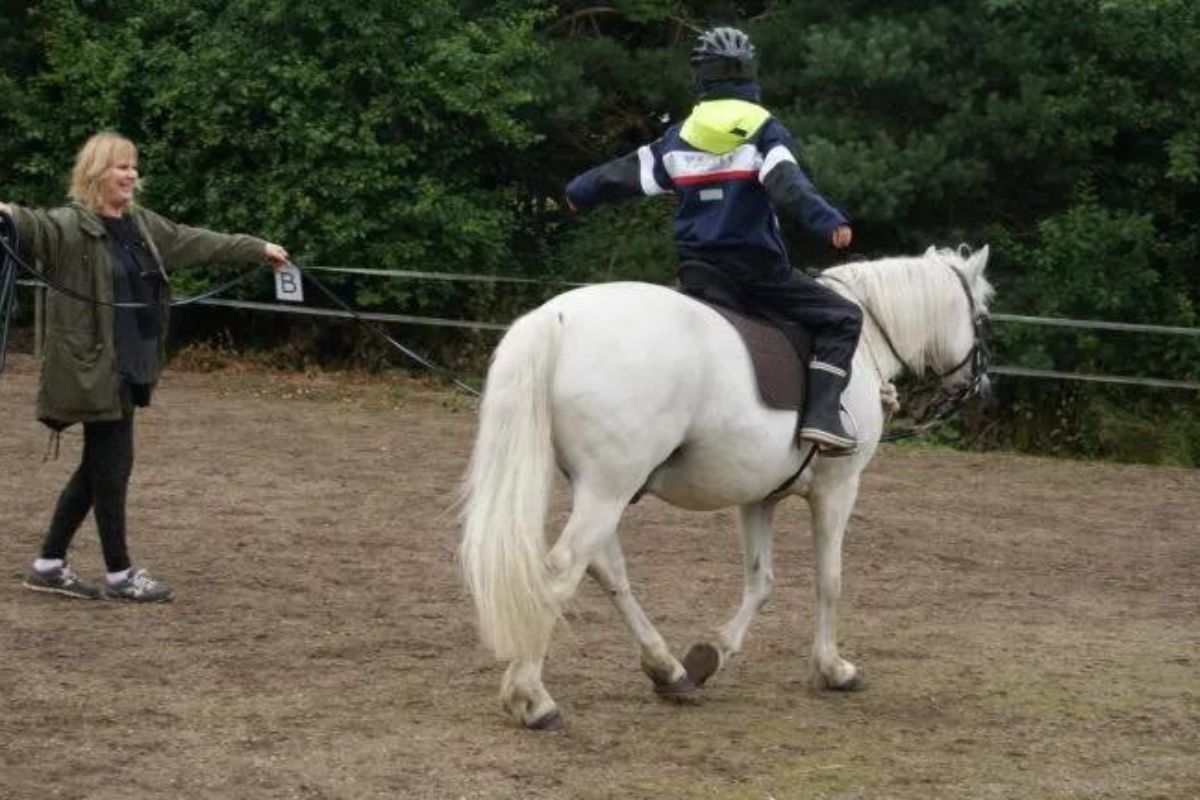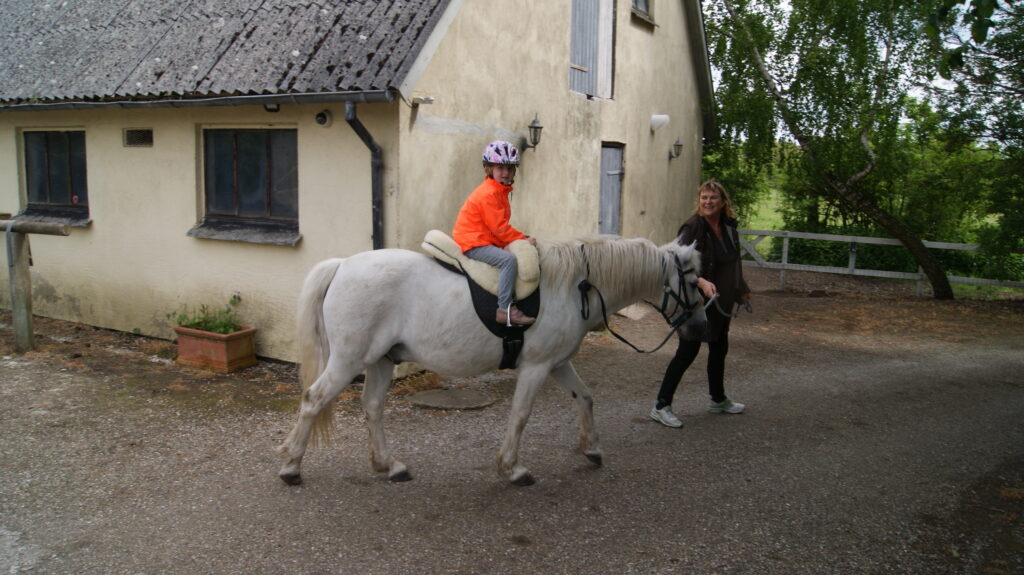Menu

Difficulties concentrating, different mental and physical diagnoses, restlessness, and anxiety. These are just a few of the challenges, the children, who participate in equine therapy, are facing. Vibeke Haarbye-Pedersen, a trained equine therapist and the founder of Terapiheste (Therapist Horses), works with the main goal - to help children live an easier and less challenging everyday life.
In the stable at Vibeke’s place, there is a blackboard, where all the children´s names are listed with information on what has to be ready when each child arrives for a lesson.
“It is very different how much each child can handle. Some can brush and tack up the horse, while others need to get up on the horse right away. Once I assisted a child who just ran away without any thought as to when to stop. The stable being close to a road with traffic, that wasn´t so good. But luckily nothing happened,” Vibeke explains.
So, the children Vibeke has the pleasure of assisting are very different from one another. Some enjoy being part of the whole process with the horse. Especially one girl loves to study the horse a lot, and she often says to the small white Connemara Pony: “I trust you, Comet.”
You may also like to read: Children and horses: When to get started - and how?
Vibeke loves teaching the children but at the same time, she is also content with the fact that it is only part-time. Most of her work life is spent being a caregiver for elderly citizens.
“I think it´s perfect that I can do both. It´s so rewarding to work with children, but also a lot of hard work,” she says.
Vibeke is very aware, that she has to focus 100 percent on the children all the time when they are at her place. Because of the different challenges the children have, it´s not always easy to work with them, and this demands a lot of Vibeke and her lessons.
One of her rules is that the parents can´t be physically present when she is teaching a child. They have to stay inside the house because otherwise, the children can´t concentrate.
“The child is all: “Look at me” instead of concentrating on the horse. Suddenly they are not focused on their own important work, and that is not the purpose of the lesson,” Vibeke explains.
How Vibeke works with each child varies and depends on the individual child. When they are in the arena it is similar to a lesson at a “regular” riding school. They have to learn to steer the horse, stop it and turn. When they succeed, it´s such a victory, you can see how they shine, Vibeke says.
However, riding around in a circle in the arena can quickly become too much for a child. This is why Vibeke puts a lot of effort into creating a variety of training. Sometimes she hides dolls in the threes, so the children have to find them. Other times they have to shoot down letters with a water pistol. All of this is to improve their coordination and concentration.
“Sometimes I also just walk the horse with the child on its back, then the child can just talk and I listen. If they want, they can sit back or lie down on the horse. It gives a very unique, calm body being on a horse.”

Far from all horses fit the qualifications to be a therapy horse. Vibeke has several experiences with horses not being able to do tasks. Either they are too active, running a little too much, or in general not calm enough. Calmness is the key word in a therapy horse and they have to learn to react to voice commands. At the moment Vibeke has two Icelandic horses and one Connemara Pony – whom all respond to her voice.
All horses are ridden by the children without a bit – otherwise, it´s too frustrating for the horses because of all the mixed signals. Vibeke and one of her friends ride the horses regularly, so they do not become numb to the rider’s signals.
“It is so amazing to be part of the children’s success – how much they grow mentally when they - on their own – are able to walk the horse into the arena. To follow this development among the children is worth it all,” Vibeke says.
In Vibeke’s experience, therapy works primarily in these areas